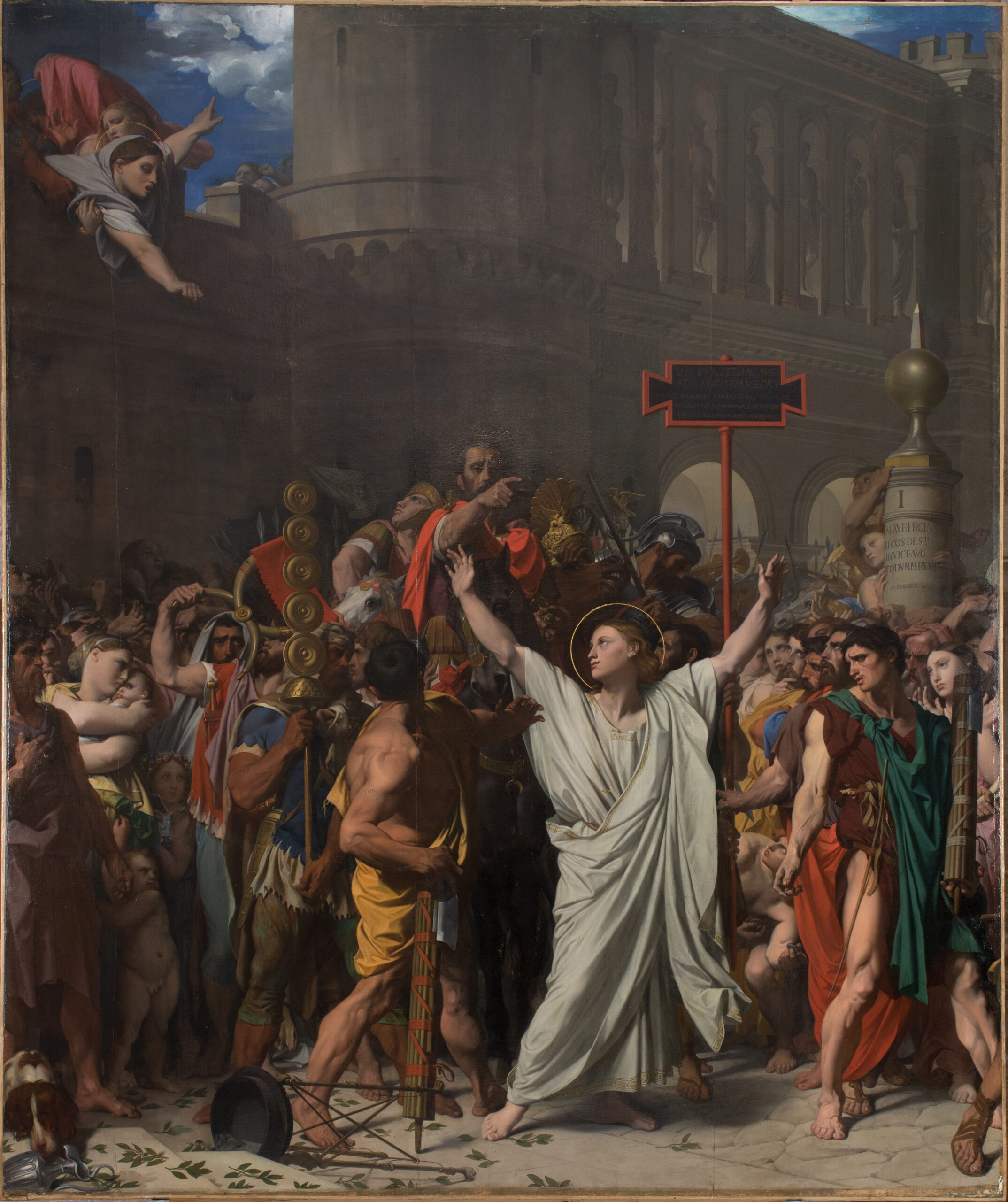
The Martyrdom of Saint Symphorien
By Catherine Wilkinson
This painting was completed in 1834, following a state commission at the request of Monseigneur de Vichy. Large in dimensions (4m x 3.40m), The Martyrdom of Saint Symphorien is the result of a long preparatory work of which more than two hundred preliminary drawings are preserved. The iconography was dictated by Monseigneur de Vichy and represents a local Saint: Symphorien d’Autun, sentenced to die for mocking a pagan procession, beheaded in front of his mother outside the city walls.
Infrared reflectography allows us to study the preparatory drawing made by the artist with a dry technique. Despite the absence of a carryover grid, it seems likely, given the dimensions of the work, the complexity of the composition and the number of preparatory sketches, that Ingres used a transfer technique, such as a tracing paper.

While the general outline is quite precise, many pentimenti are visible, especially changes in the positions of hands, feet, arms and even faces of certain characters. Interestingly, the artist also noted colour indications, such as the word “jaune” (yellow) on the veil of the mother.
The artist also used tracing tools such as a compass or a ruler for the architecture, the soldier’s spears and the Saint’s halo.
Thus, the reflectography highlights the construction of the painting. We notice that Ingres paints the entire underlying element, the structure in a way, before painting the overlying object. For example, regarding the clothes of Symphorien, the dress is painted entirely before being covered by the drape of the tunic. Likewise, the architecture of the ramparts is painted before the tower.
False colour infrared imaging provides us with additional information regarding pigments by associating specific colours with a given gray range and thus refining our knowledge of the painter’s technique. We notice that the sky, as well as the tunic of the soldier holding the signum, are composed of an azurite base and highlights of lapis lazuli. The reds (appearing yellow in false colors) are made with vermilion. The green mantle of the soldier carrying the fascio is a copper-based pigment (blue in false colors); other greens appear pink, that is to say a mixture of blue (lapis-lazuli?) with a yellow (lead and pewter?). For the rest of the composition, the palette is reduced to earths, ochres, lead white and carbon black.
A huge thank you to Arcanes for sharing their findings.